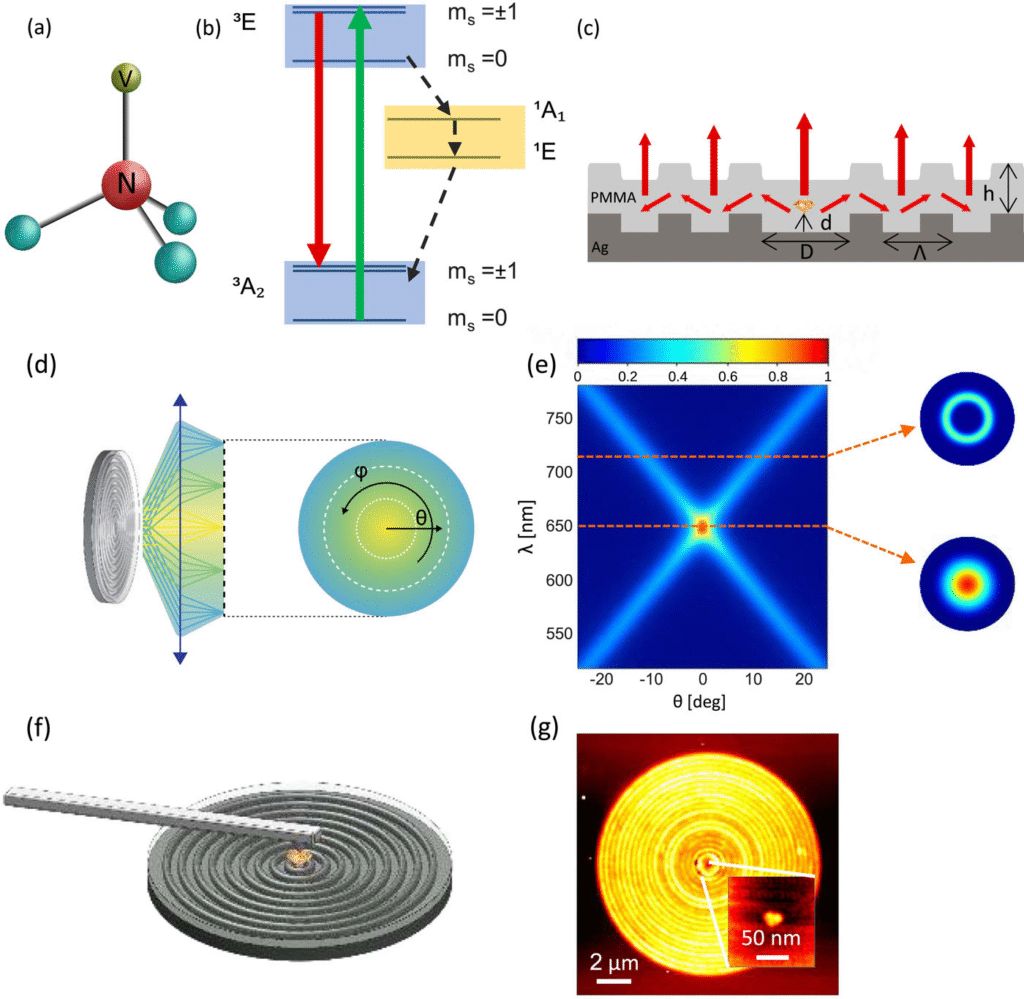Researchers from the Hebrew University of Jerusalem (HU) and the Humboldt University in Berlin have achieved a breakthrough in capturing up to 80% of photons from defects in diamonds at room temperature. The research, published in APL Quantum, reports on an advancement in capturing single photons from nitrogen-vacancy (NV) centers in nanodiamonds, which are key for developing next-generation quantum computers, sensors, and communication networks.
The researchers addressed the challenge of light scattering by embedding nanodiamonds with NV centers into specially designed hybrid nanoantennas, built from layers of metal and dielectric materials. The nanoantennas guide the light in a well-defined direction. The team used “ultra-precise positioning” to place the nanodiamonds at the antenna center, within a few billionths of a meter, which is a critical step for achieving optimal coupling and performance.
The new system, which works in a chip-based design at room temperature, is intended to be more easily integrated into real-world systems than previous approaches. Prof. Ronen Rapaport of the Hebrew University Racah Institute of Physics commented that the new approach brings researchers closer to practical quantum devices. The research was supported by BMBF Grant No. 16KISQ003 (QR.X).
Read the full paper in APL Quantum here.
September 29, 2025


